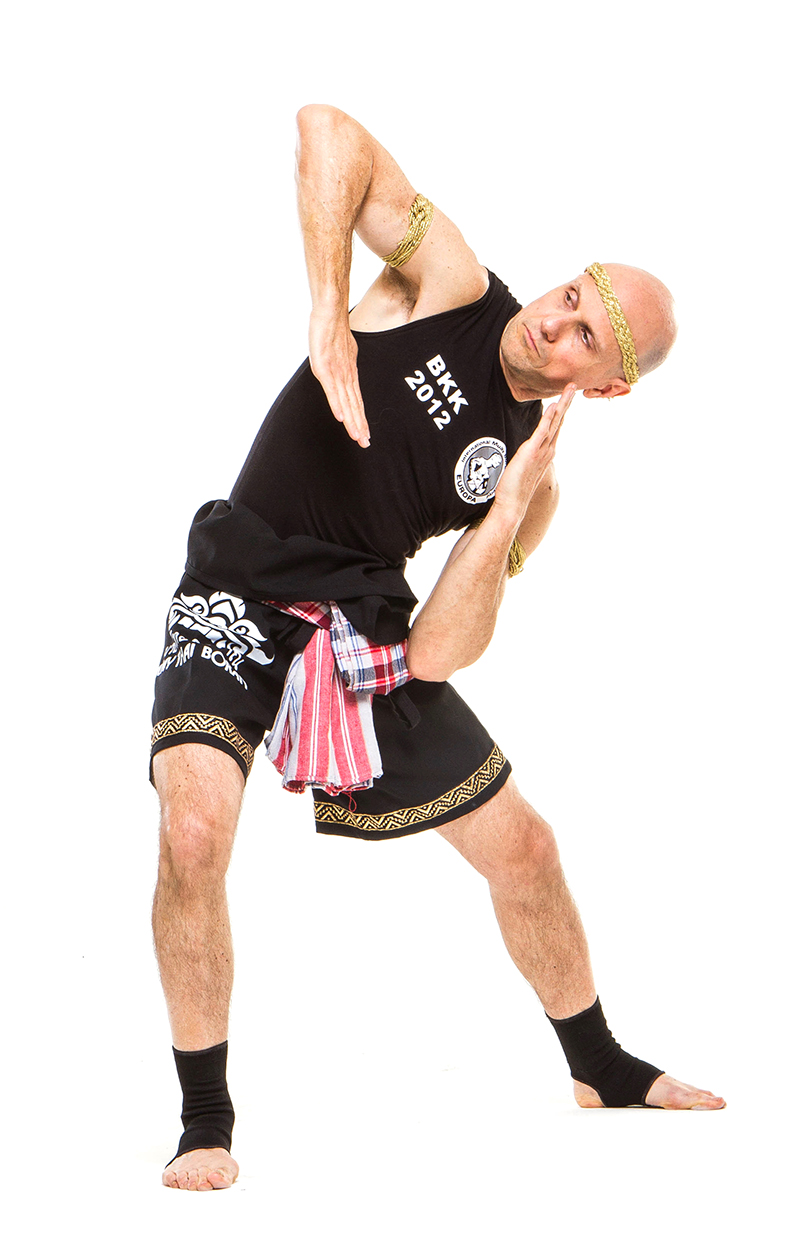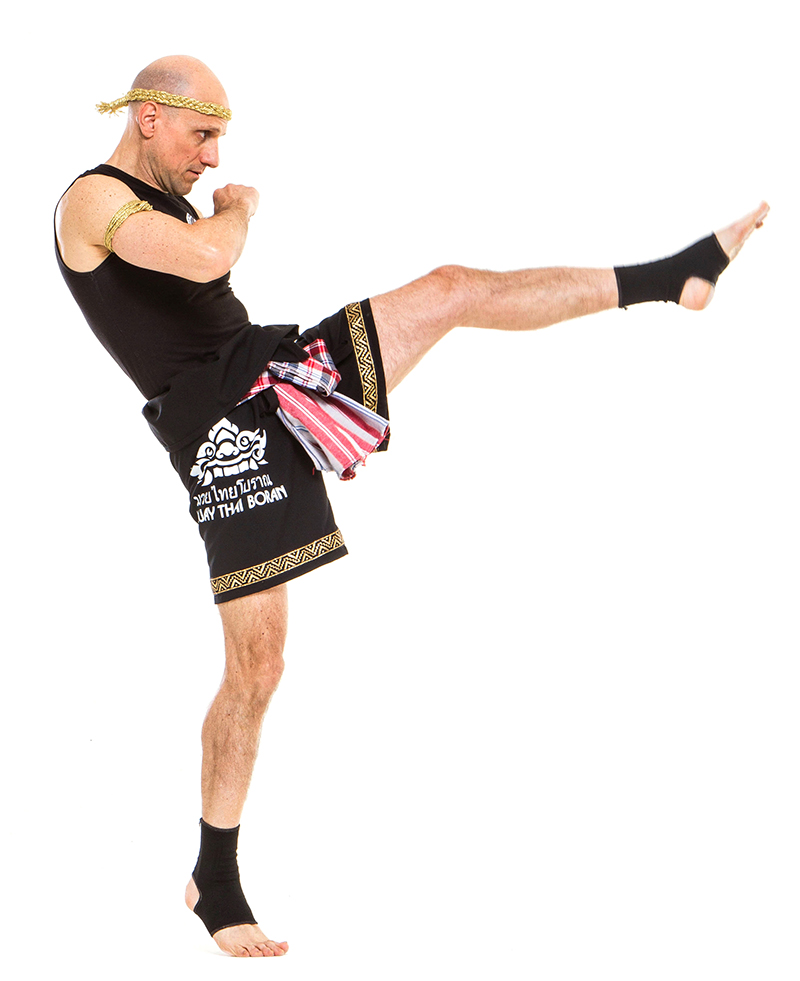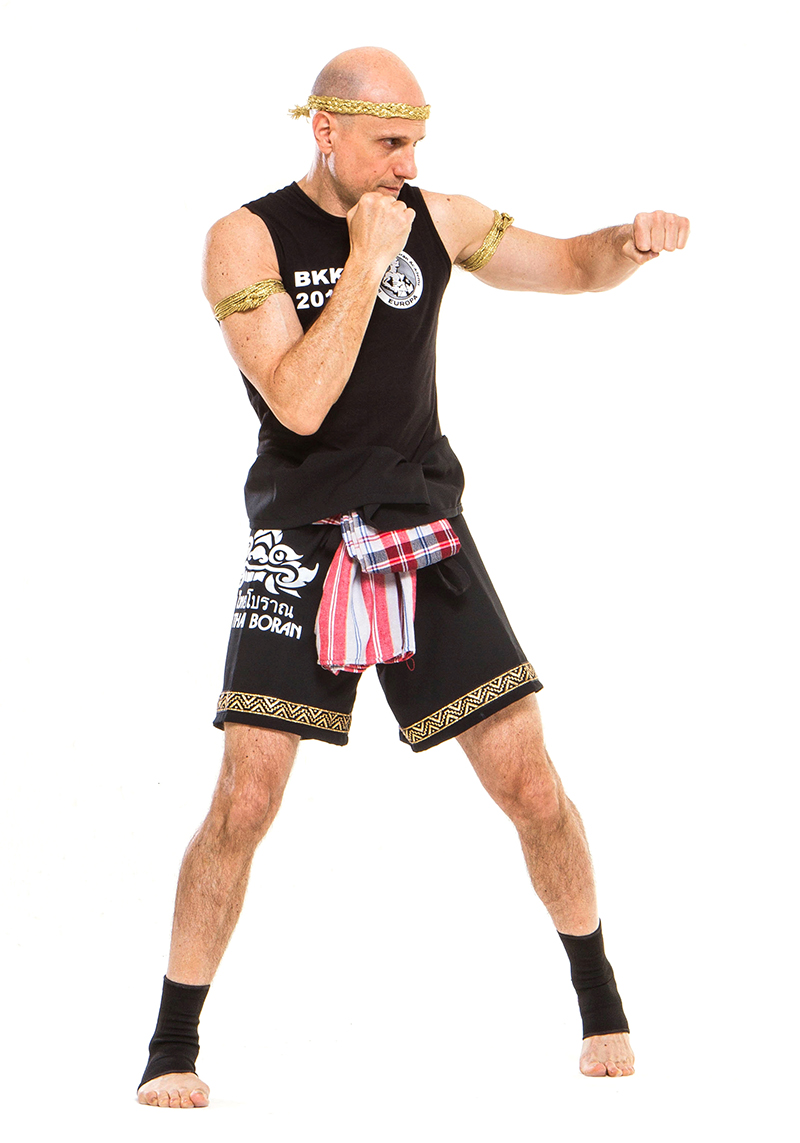
Muay Boran Basics: the true path to mastery
All Martial Arts’ skills are based on specific groups of maneuvers and fighting principles: these fundamental elements are usually called “the basics”.
Muay is a complete fighting system: it is regarded by some as a purely striking art but all experts know that the Siamese weapon-less style is also rich in grappling techniques suited for close range combat. All the superb fighting skills of Muay are taught by knowledgeable teachers following a well-established step by step approach; a building cannot be built starting from the roof. Likewise, a martial arts student cannot be taught advanced techniques too soon, before he has learned the basics of his Art. Learning doesn’t mean just seeing, it means absorbing completely. In fact, the basics of Muay must be digested and become part of all students’ organism, if they wish to become experts or teachers of this Art. And once a student has reached a good level becoming himself a teacher (Khru Muay), he must not neglect the study of basics, even if he starts to learn very advanced techniques. If he does, his technical progression will start to slow down, his moves will start to be tarnished and sooner or later he will lose his skills. Studying a Martial Art is like boiling water: if the fire dies (the energy put in learning and rehearsing the basics), the water will quickly get cold again (the technical level will get worse in a short time).
Thai Boxers know this well and for this reason they keep on rehearsing a few basic moves over and over again as long as they wish to step on a ring and fight against tough opponents: no Muay Thai champion will ever discard basic techniques as being “too simple”. On the contrary he will do his best to hone the execution of every step, dodge, strike until perfection is reached. Unfortunately, this is not always the case with traditional Muay exponents: their interest in learning new techniques to the detriment of basics, is the reason for a widespread lack of technical prowess.
The long hours spent to rehearse each move, repeating the same maneuver for hundreds of times may seem boring: however, in martial arts learning there is no shortcut, no cheating. Only through committed, constant practice of basic techniques we shall ever reach full mastery of our chosen Art. The secret is to never be satisfied of one’s ability: if you think you are fast, work hard to become faster. If you are a hard puncher, don’t feel satisfied and train to punch harder.
Some important points with regard to Muay’s basics are as follows.
• With regard to Mai Muay (techniques of Muay), basic doesn’t mean easy. On the contrary it means most important.
This is a common misconception. Some students (and teachers) confuse the term basic with easy and, as a consequence, they discard the regular practice of basics as useless. This is a big mistake since every basic Muay Thai move hides a quantity of fighting concepts that require time and thousands of repetitions to be fully understood. All the nuances of a “simple” step and punch maneuver, for example, with all its possible variations, can be appreciated only in time, after many rounds of rehearsal with a good teacher and many sparring partners of different size.
• Without strong roots a big tree cannot grow healthy and is doomed to die.
Master Chaisawat Tienviboon founder of Muay Chaisawat compares Muay to a big tree: the roots are the fundamentals or basic components of his Art. The stronger the roots the bigger and healthier the tree. In a similar way, continuously working on the fundamentals of Muay brings nourishing to the roots of our tree, i.e., Muay Boran IMBA and keeps it growing strong and healthy.
• If you want to be a good martial artist behave like a ruminant.
In fact, rumination, is the process by which the cow regurgitates previously consumed feed and masticates it a second time. Similarly, a good martial art student is supposed to first “swallow” the knowledge he has been taught (that is, absorbing without asking too many questions) and then regurgitate it (meditate on what he has learned), chew it again (rehearse over and over again) until he really digest it (the technique becomes part of him).
• Learning is a spiralling process, not a linear one.
Instead of searching for “new techniques” to learn, a good martial artist should concentrate on perfecting already acquired skills, i.e., the basics. A correct learning process can be compared to a drill that penetrates deeper and deeper into a surface. The deeper you go (the more you train) the better you will understand your Art’s principles. New elements will spring out as a consequence of a better comprehension of the fundamental components. The I-already-know-this mentality is self-destructive for a Muay Boran student and even more so for a teacher.
• Basic training is linked to the concept of humility.
Many times martial arts teachers work hard to reach a good level of technical proficiency and when, according to their judgement, this is accomplished, they simply stop. Being hungry no more for knowledge or recognition by their peers their commitment to training simply fades: the basics start to be considered as “students’ stuff”. However, this kind of attitude reflects an unjustified pride that, in the long term, can only create a false sense of achievement. A humble practitioner, on the contrary, realizes that he is incomplete in his ability and therefore keeps trying hard to be a better martial artist. Once more, humbleness wins over pride.
A final word: when in doubt, stick to basics.
• For more information on Muay Boran fundamentals check: Discoverimba Web App




